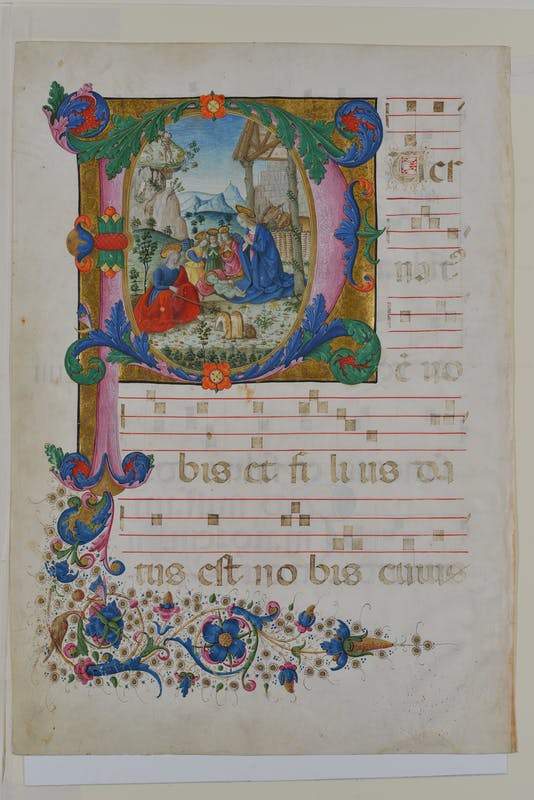In Florence, the exhibition Stories of Painted Pages. Manuscripts and Miniatures Recovered by the Florence Heritage Protection Unit, at the Sala delle Nicchie in Palazzo Pitti until Oct. 4.
On display are forty precious codices and illustrated scrolls by the masters of the Middle Ages and Renaissance: a treasure trove of knowledge, art and devotion, first stolen and then found: these are ancient and precious books such as the tiny Ufficio dei Morti that belonged to Pope Leo X de’ Medici, the grand chorals, and the scrolls finely illustrated and decorated by some of the greatest masters of the Middle Ages and Renaissance. The exhibition, organized by the Uffizi Galleries, includes about forty works, recovered after the theft by this special command of the Arma. The manuscripts and individual illuminated pages on display span the great season of book production in central Italy from the 13th to the 16th centuries: they come from Castelfiorentino, Colle di Val d’Elsa, Florence, Perugia, and Pistoia, and the illuminations are the work of such important artists as the Master of Sant’Alessio in Bigiano, who despite still being anonymous was at the head of the most active in Tuscany in the last quarter of the 13th century; Pacino di Buonaguida (one of the earliest and most gifted of Giotto’s followers); through to Attavante degli Attavanti and Gherardo and Monte di Giovanni, internationally renowned book illustrators at the time of Lorenzo the Magnificent.
The exhibition also tells the story of thefts and recoveries: among others, that of the chorals from the convent of the Minor Observants of San Lucchese in Poggibonsi, the subject of two thefts, in the 1930s and then again in 1982; the more than 20 volumes from the Benedictine abbey of Montemorcino in Umbria, which, when transferred to the abbey of Monte Oliveto Maggiore in Asciano, were stolen in 1975; and the precious and elegant Office of the Dead of Leo X de’ Medici. The exhibition does not exclude the scarred works, the pages from which the miniatures were cut out, the sheets torn from the codices, and it is therefore an opportunity to think about the theft of these artifacts not only as a subtraction of a common good, but as a violence that goes right to the heart of our culture and attacks the texts, our language, and the paintings that accompanied it.
The creation of the exhibition was supervised by a group of art historians, residents and doctoral students in History of the Miniature at theUniversity of Florence, under the guidance of Professor Sonia Chiodo, one of the leading experts in the field. Particularly in such a complex field as the study of volumes (codicology) and their decorations, it is indispensable that the Carabinieri’s anti-crime work make use of precise specialized skills, as in this case: every miniature or ancient book recovered must be able to be traced back to the context to which it belongs, and it is in this sphere that a dragnet of young scholars has built the Palazzo Pitti exhibition. And the concreteness, the importance of the results they have achieved will not be linked only to the temporary occasion of the exhibition: in fact, their work includes the census of all the missing items so as to make available to the Carabinieri Data Bank a harvest of up-to-date information, essential to current and future investigations.
Stories of Painted Pages also has a special infographic set-up: seven drawings by renowned illustrator Vanna Vinci, made interactive through touch technology, which present visitors, in a clear and engaging way, with the places and protagonists of the stories the exhibition reconstructs: copyists, illuminators, religious and, last but not least, the thieves and the police.
For all information you can visit the official Uffizi website.
 |
| Miniatures and manuscripts recovered by Carabinieri on display at Palazzo Pitti |
Warning: the translation into English of the original Italian article was created using automatic tools. We undertake to review all articles, but we do not guarantee the total absence of inaccuracies in the translation due to the program. You can find the original by clicking on the ITA button. If you find any mistake,please contact us.